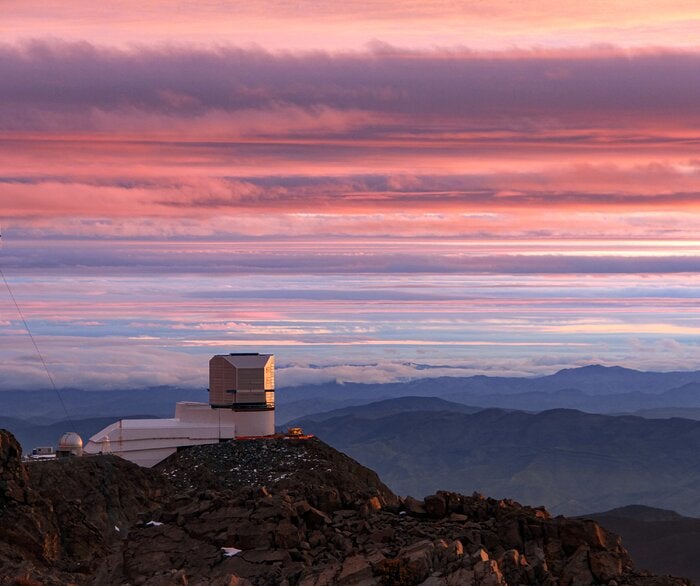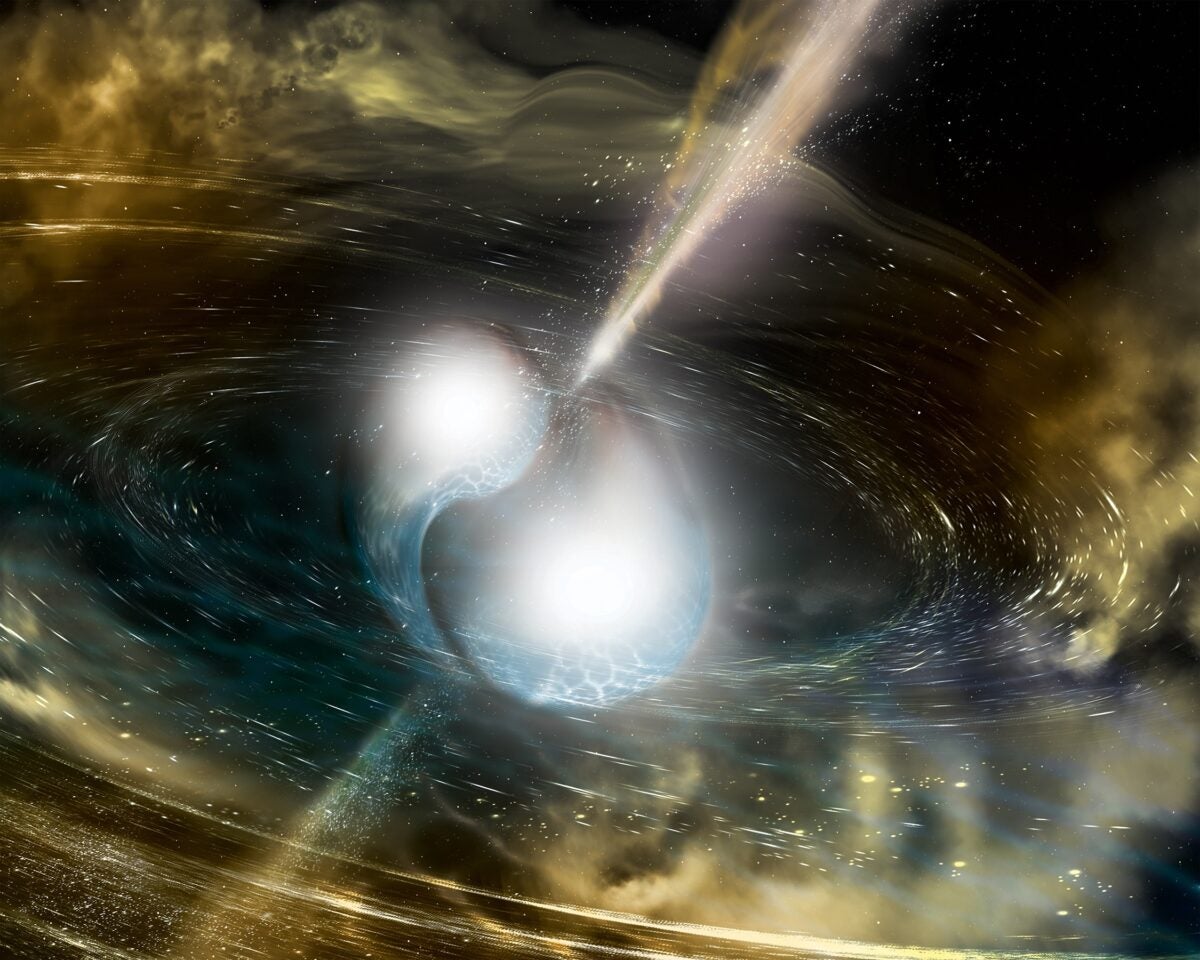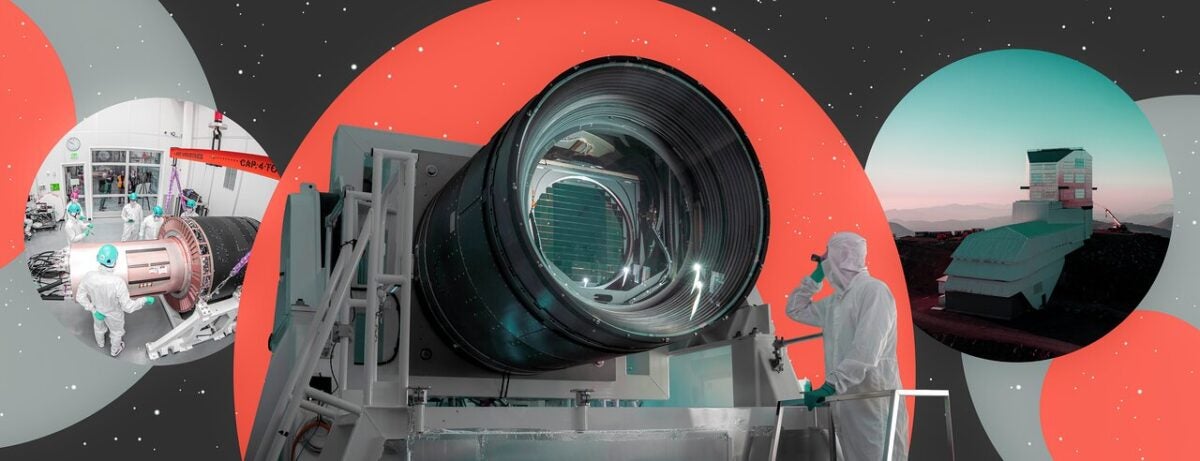
The Vera C. Rubin Observatory at sunrise. Credit: Vera C. Rubin Observatory/NOIRLab/AURA/NSF/J. Fuentes
When the Vera C. Rubin Observatory comes online, perhaps at full bore in 2025, this powerful and unique survey telescope, at high altitude in Chile, will survey the heavens in a new and unprecedented way.
Originally named the Large Synoptic Survey Telescope, the observatory was renamed to honor the great Vera Rubin, who died in 2016 and was a pioneering researcher on the universe’s composition. Astronomers and project managers hope the opening of the observatory at full tilt for science operations will commence what they term the Legacy Survey of Space and Time, and will usher in new ways of understanding the cosmos both near and far.
The observatory will scour elements of the solar system, study transient events, map the Milky Way Galaxy in detail, and examine the optical counterparts of gravitational wave events. “Having a survey that accesses such an enormous volume of the universe in four dimensions provides a unique opportunity to discover things that we don’t know about yet,” says Federica Bianco, Deputy Project Scientist of the Rubin Observatory and astrophysicist at the University of Delaware.

Tracking changes in the sky with the Rubin Observatory
Igor Andreoni, an astrophysicist at the University of Maryland and NASA-Goddard, says Rubin’s large aperture, wide field of view, and sensitivity to viewing deep into space will be a game-changer for astronomy.
Possessing this much sensitivity means the Rubin Observatory can detect extremely faint sources, such as the afterglow of a kilonova. Kilonovae are bright flashes of light that disappear within a few days, and astronomers believe they occur when two neutron stars crash into each other and are responsible for the formation of heavy elements such as gold, silver, and platinum.
To spot such cosmic crashes, Rubin will allow researchers to follow up on gravitational wave detections. Researchers would like to capture the electromagnetic counterparts of these waves, and Rubin can be quickly pointed toward the direction of a signal. This kind of followup occurred when the LIGO instruments observed gravitational waves and then NASA’s Fermi satellite subsequently detected a faint pulse of gamma rays from merging neutron stars in 2017. The event, dubbed GW170817, was later on followed up by multiple observatories worldwide that detected the optical and infrared light from a kilonova.
“If there are neutron stars that are merging, or black holes and neutron stars that are merging and LIGO senses a gravitational wave, with Rubin, it’s going to be much easier to follow up and see if there’s a twinkle of light that follows along with it,” says Mario Juric, Rubin Observatory’s solar system discovery team lead and director of the University of Washington’s DiRAC Institute. “We’ll be able to understand black hole physics that way.”
Planning how time will be allocated to scientists

The possibilities have an entire astronomical community thrilled for the observatory’s decade-long survey of the southern sky. However, observing the entire southern sky will take immense time and serious planning. Allocating how the scientific community will use the observatory’s time is also taking considerable thought.
To spot kilonovae and follow up on signals from LIGO or other gravitational wave detectors, the Rubin Observatory will need to occasionally interrupt the main survey. In March 2024, researchers involved with Rubin met at Rubin ToO 2024, a gathering which stands for “target of opportunity.” Experts discussed how they could follow up on signals while minimally interrupting other projects.
“So, what we are asking the project to do is to reserve some part of the LSST time to do these types of explorations that most likely no other instrument will do,” says Raffaella Margutti, an astrophysicist at the University of Berkeley who specializes in stellar explosions.
About 10 percent of Rubin’s LSST observation time will be dedicated to these types of surveys and programs. Another includes a set of so-called Deep Drilling Fields, wherein Rubin will observe five regions of sky multiple times. The most recent Deep Drilling Field selected is in coordination with the Euclid Space Telescope and is called Euclid Deep Field South.
Limitations and a community effort
While Rubin is a powerful telescope, it does have limitations. The pattern Rubin uses to observe the sky isn’t compatible with seeing high-speed transients called fast blue optical transients. Rubin must team up with other observatories to conduct such surveys, including the La Silla Schmidt Southern Survey. Margutti says combining these surveys will fill in the gaps that the LSST will miss. Further, Rubin and its collaborators are setting up programs to involve the public in citizen science projects.
“One of the limiting factors with the science we can get out of Rubin is how well we can analyze the data or find interesting things in the data,” says Juric. “So, you have all these software engineers who are amateur astronomers who know how to find these interesting anomalies. They know how to construct these kinds of algorithms.”
Not only will Rubin’s dataset be large, but the resulting images will be so large that not even The Sphere in Las Vegas could display them, says Bianco. Once captured, anyone will be able to zoom in on any part of the Southern Hemisphere sky and take a look. The first image the public will see from Rubin is under wraps. Researchers have some ideas, and there is a long list. “I will promise that it’s going to be awesome,” says Clare Higgs, Rubin’s Astronomy Outreach Specialist.
Stay tuned for exciting times ahead!

